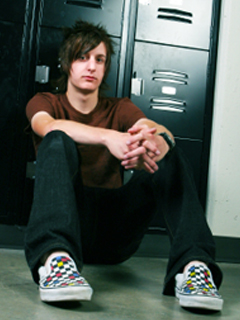The VIRTUS ® Programs
 Lead researcher Wendy Walsh, associate professor of sociology at UNH Crimes against Children Research Center, reports than many parents blame their child when the child reports sexual abuse by an adolescent.
Lead researcher Wendy Walsh, associate professor of sociology at UNH Crimes against Children Research Center, reports than many parents blame their child when the child reports sexual abuse by an adolescent.
Walsh believes parents have difficulty with the concept of adolescent sex offenders. Many parents still think of sex offenders as older strangers rather than as someone their child knows, trusts, and is close to his or her age. Walsh elaborates that parents might feel their child could have done something to prevent the association with the abuser. Some parents may assume that sexual acts between those close in age are consensual and discount the possibility of abuse.
Researchers at UNH analyzed 161 cases of child sexual abuse involving suspects who were 12 and older and victims who were 5 and older. The study data was collected by the Children’s Advocacy Centers from ten communities in Alabama, Pennsylvania, South Carolina, and Texas.
Parents were found to have significantly higher levels of blame and doubt as the victim’s age increased and when children were African- American. Walsh states that more research is needed to explore how blame and doubt are associated with race or ethnicity.
"Previous studies by the UNH Crimes against Children Research Center of sex offenses against minors show that 36 percent of the offenses were committed by juveniles. Other research estimates up to 50 percent of known cases of child abuse involve an adolescent male perpetrator – estimates the researchers consider conservative given the reluctance to report adolescent sex offenders, many of whom who are related to the victim." “Parents Blame Child Sex Abuse Victims More If Perpetrator Is Another Youth, UNH Research Shows,” www.unh.edu (Feb. 7, 2012).
Although parents and caregivers may believe that the idea of children abusing other children is a myth, the fact is that it happens.
In a majority of cases, children do not lie about sexual abuse. Parents and caregivers should listen to reports of abuse with an open mind.
Whenever a child reports sexual abuse, safe adults have the responsibility to report the abuse. When parents and caregivers do not report instances of abuse, the abuse will continue, causing more harm. If an adolescent is allowed to continue the abuse, he or she is likely to continue abusing not only the same victim, but also other people after the abuser reaches adulthood.
Here are some points to consider about child sex abusers according to SafeSociety.org:
- Children as young as 4 or 5 may unknowingly engage in sexually harmful behavior, although more often, those who sexually harm children are adolescents
- Usually, but not always, the young person causing the harm is older than the victim
- Often the child victim is uncomfortable or confused about what is happening, but may feel that he or she willingly participated or is to blame for the situation
- Many times, one or both children do not understand that the behavior is harmful
- Parents and caregivers should act quickly to prevent the abuse from continuing
- Be sure to have the perpetrator get the necessary professional help to stop the abuse